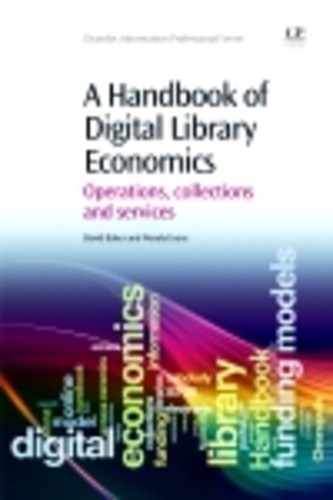Table of Contents
Chapter 1: Digital economics: introduction and overview
Recent history and relevant work
Basics of a sustainable approach
Case Study 1: The JSTOR platform
The MUSE mission: a balancing act
The MUSE experiencemanaging the digital transition
The MUSE experience: reinventing the platform at the article level
The MUSE experience: adopting a content neutral approach
The MUSE message: evolve, expand, engage and embrace the future
Case Study 3: Organic, symbiotic digital collection development
Introduction to the university and library
Digital collection community partnerships
Case Study 4: Developing a portal framework for humanities scholars
Building the portal (experiences to date) Technology and engineering considerations
Project staffing and management
Recommendations (key messages for other practitioners)
Charging, costing and pricing models
Case Study 5: accessCeramics: building and sustaining a global resource for arts education
Alignment of benefits and costs
Case Study 6: The Chronopolis digital network: the economics of long-term preservation
About Chronopolis – digital preservation across space and time
Case Study 7: Economic implications of alternative scholarly publishing models
Implications for research libraries
Case Study 8: Sustainable economic models: Portico
Economic model development – electronic journal preservation
Economic model development – electronic book preservation
Economic model development – digitised historical collection preservation
Surveys of public library users
Surveys of academic faculty and staff
Reasons and purposes of using library services
Case Study 10: EZID: a digital library data management service
Development of the EZID pricing plan
Patron-driven lease – the answer to inter-library loan for e-books?
Collection development on EBSCOhost
Case Study 12: Woodhead Publishing Online – Chandos Publishing Online
Woodhead Publishing Online, Phase 1: Market research
Woodhead Publishing Online, Phase 2: The mission
Platform development and lessons learned
Case Study 13: A cost study of BMCC electronic reserves with a streaming video service
Electronic reserves permissions costs
Case Study 14: National Academic Research and Collaborations Information System in the Netherlands
Cost-effective decision-making
Responding to future developments
Other costs related to the maintenance of NARCIS
Chapter 4: The universal library: realising Panizzi’s dream
Building infrastructure: the long haul
